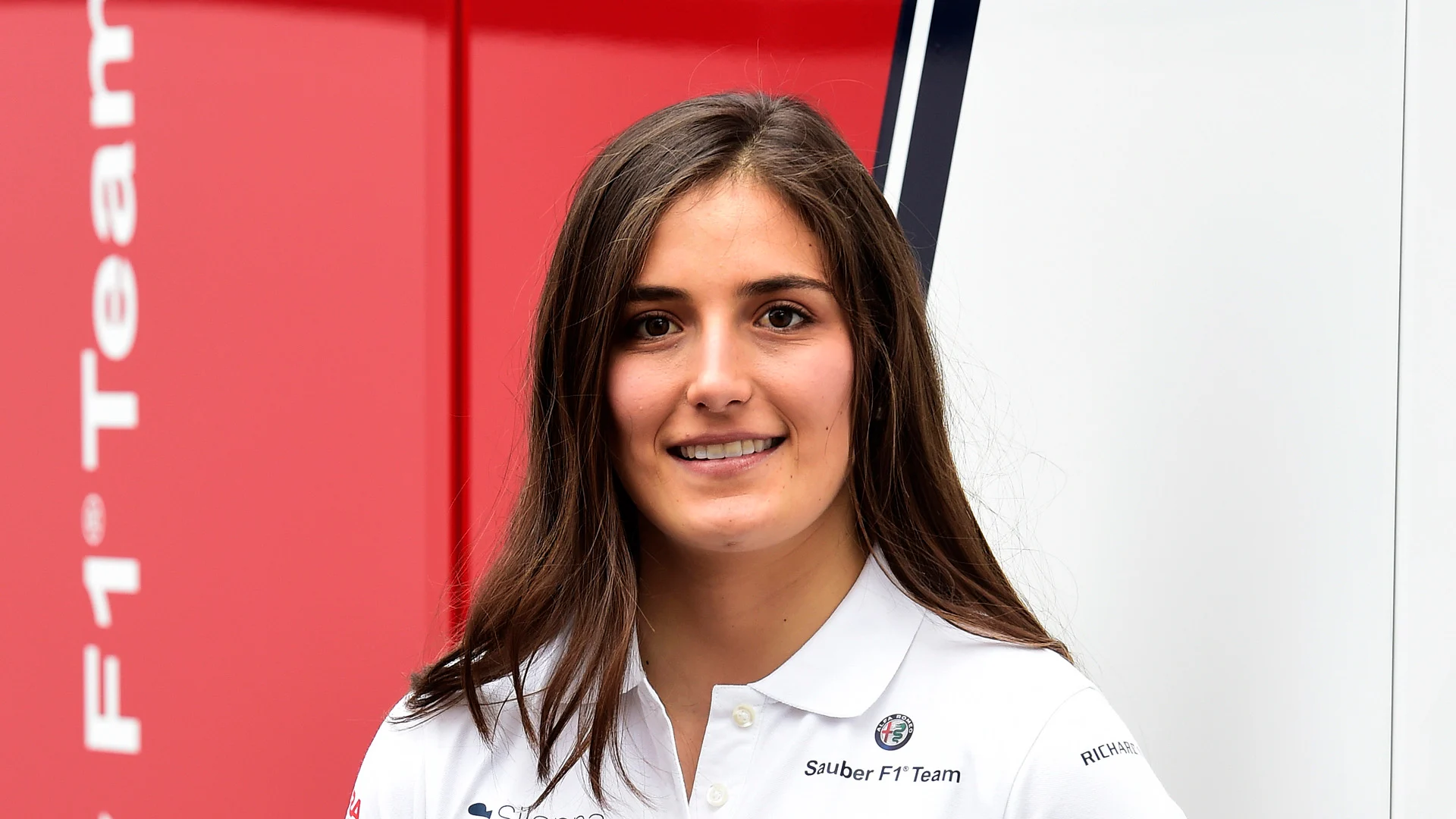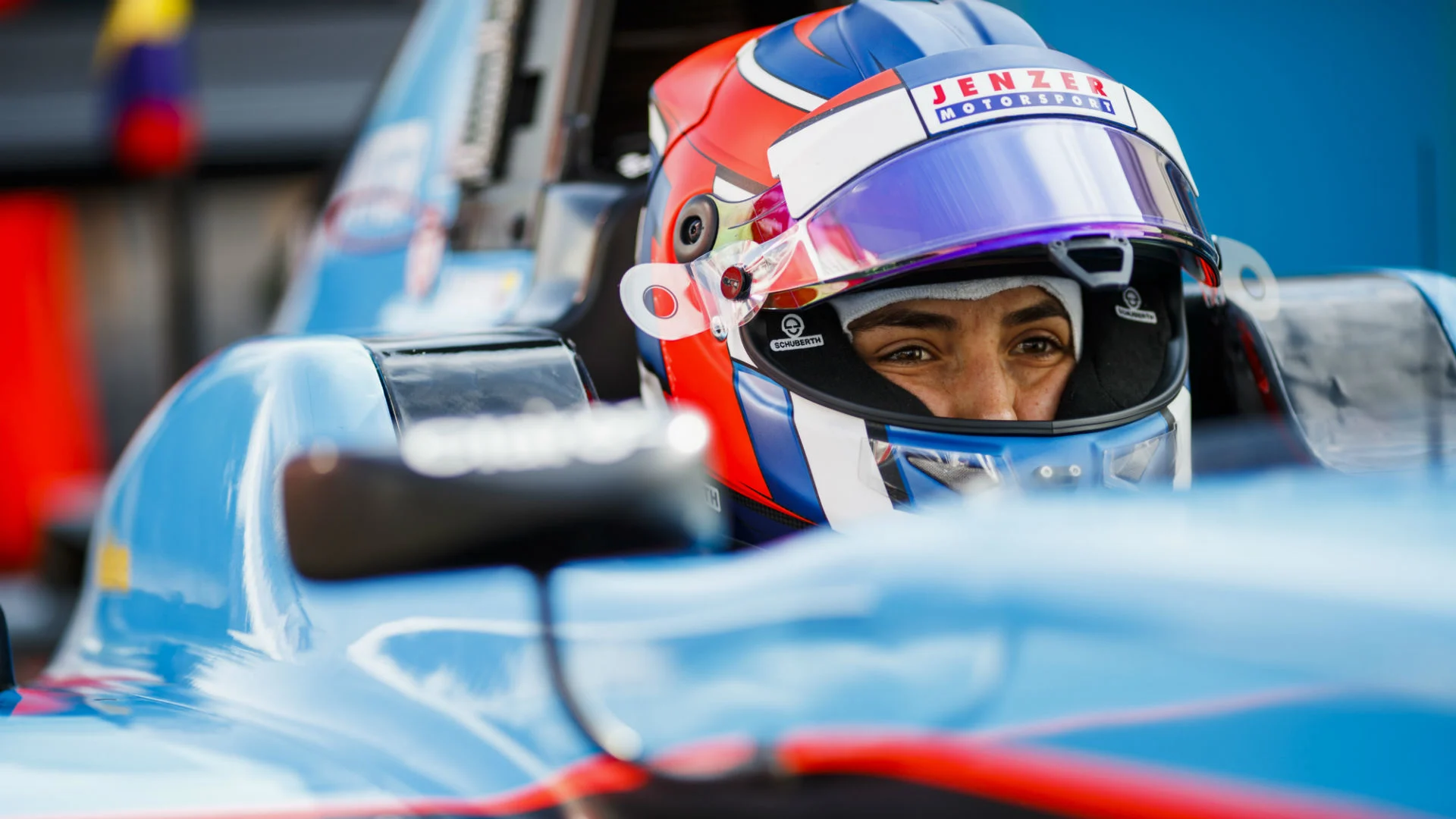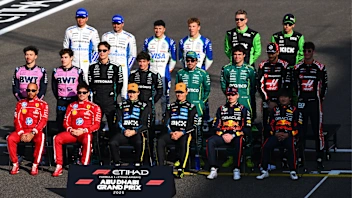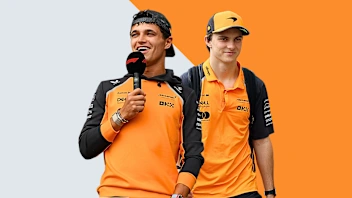SUNDAY CONVERSATION: Tatiana Calderon on quest to prove her worth in F1


It’s been some time since a woman sat behind the wheel on the Formula 1 starting grid. In fact, you have to go all the way back to the 1976 Austrian Grand Prix, when Lella Lombardi finished 12th in Spielberg. But Tatiana Calderon wants to end that four-decade run, determined to reach the pinnacle of motorsport - and she sat down with David Tremayne to discuss all things racing...
The subject of gender in motorsport should be like the subject of race or colour or creed. An irrelevance. Of passing interest, the way that hair or eye colour, or height or weight is. And when it comes to women racing drivers, only one thing matters. The same thing that matters for the men. What does the stopwatch say?
Tatiana Calderon, the 25 year-old Colombian racer currently seeking to take the next big step via GP3, is no stranger to the gender thing.

“Oh yes, it's there, even if you don’t want it,” she says with a ready smile. “If I want people to treat me exactly the same as the guys, it’s not there yet. It's difficult when you come to a new team and you have to earn the respect from the engineers and from the guys you race with.”
We’ve doubtless all had moments in a group when we’ve felt like the excluded party, and she makes an interesting point about gender listening.
“There were two girls I raced with before in a team, Raffaella Fry and Selena Gomez. The team said to them, ‘We understand what you need.’ And they treated me like an experienced driver as well. I have been in other teams where I was number three of three, before I even got to jump in the car.
“You need to fight that, and prove yourself with the stopwatch. I request things because I know a lot about the technical side and I know a lot of what I need to go quick. There are certain things that I like in the car. I already know that, so I fight for all those things and when they put what I say into the car, I can show it on the stopwatch, so they start to believe. So okay, we need to work together. Often it's for their ego, really.” The smile is back. “And I’ve found that at Jenzer Motorsport, they don't have that ego, so it's working for me at the moment.”
Calderon – or TCal as she’s often known – has been racing a long time. She started in karts when she was nine. Her parents, Alberto and Maria, hail from Bogota where they run a Kia car dealership.
“He loves racing, but my grandparents – my grandmother, really – never allowed him to race. But it was my sister Paula, who is seven years older than me, who took me to the track one night. I loved it!
“So we went there every day after school. Then there were some championships there at night and I started to win. So the owners of the track let us try a more professional go-kart, a four-stroke. Later Montoya brought a new series to Colombia called EasyKart, and that’s where I really started to compete.”

Today, in conjunction with Fernando Plata - the Mexican who raced against Mika Hakkinen in F3 and won the 1989 Class B section of the British Championship - Paula manages her sister’s career. “She looks weak,” Calderon laughs, “but she’s a killer!”
Paula raced with distinction herself, but their brother Felipe once regarded karting as a girls’ sport. Success in karting led Calderon to car racing with Paula in, appropriately, a Kia Picanto when she was 14, then she stepped up the ladder via podium finishes in Star Mazda and the European F3 Open series; European F3 and the Toyota Racing Series; and the British F3 championship where she became its first female podium finisher at the Nurburgring in 2013.
From there she won the opener in the Ferrari Driver Academy’s Florida Winter Series in 2014, when she also finished consistently in the points with Mucke Motorsport in the FIA Formula 3 European Championship. A year later in that series, racing for Carlin, she led in the rain at Spa, and finished runner-up in the four-race MRF Formula 2000 series.
2016 saw her graduate to GP3, with Arden International, before a switch to DAMS in 2017 and then Jenzer this season. During that time, her sole Renault 3.5 World Series race, in Bahrain in 2017, yielded a podium.
Along the way, whenever she has encountered slights, she has used them as motivation. Inevitably, prominent women in sport become role models to young girls. That’s already happened to Calderon back home, and is happening increasingly in Europe, too. They see another woman competing and it ignites a spark.
“I started to realise this more this year,” she says, looking a trifle embarrassed at the thought. “I meet girls all the time and they say, ‘Oh, you're my inspiration.’ I never really thought I was going to be that, because that was not my first intention. I do this because I love it. But if I can also try and help to open doors for them, I’d be really happy to do so. That's why I'm working with the FIA, not just to be different. Susie [Wolff] did the same for me, and I'm very grateful and I wish I had met her earlier. If I can do that for other people - that would be really good.”

It goes without saying that Calderon is a dreamer. Anyone with ambition has to be. And it’s far from a pejorative term. Today’s dreamers are tomorrow’s achievers. And as Eleanor Roosevelt once famously said, the future belongs to those who believe in the beauty of the dream. Calderon’s began a long time ago.
“Yeah, I would say to myself all the time, especially in Colombia, are you sure you're going to get into Formula 1? But you think to yourself, why not? That's why I wake up every morning, because I want to be an F1 driver. It’s not good to say, but I don’t care about them paying me millions, I just want to drive those cars as fast as I can and really get the chance to prove myself.
“That's why I'm racing GP3. I don't want to let people give me an opportunity because I'm a woman. I don't want to be taken like that. I want to be taken like who I am, as a driver. I think I have something to bring to the table, because I'm very sensitive. I think my feedback is quite good. I really want to earn my place.”
Ask her to try and quantify her ability, and she replies, “I know I’m very smooth. Physically, you need to work a lot harder to really be able to turn the car in, in a formula car. Not so much F4, but F3. So I think if the cars had power steering that would definitely make our life easier!
“When I did that Renault 3.5 race, it was the first time I had a pit stop. And it felt such a big car, with 500 bhp, but it was really light to drive. It had much more downforce than the GP3 car, but I found it much easier to steer. The GP3 car feels like a truck. I think I react better with faster cars. My style is like, the power suits me, when you have to be smooth with the throttle. Those finer details, I think maybe women feel a little bit more because we are a little bit smoother as well.”
This year she’s shown good pace against some worthy adversaries, as her confidence in her new berth continues to grow.

“I have been given a great opportunity here. Of course, I need to show that I can deliver in racing and I've prayed I’ve made it clear. I don't think that I’m far away. I have been quick and I think I have the speed, now I need to put it together.
“I think I was quite surprised of how good I fit in the team. So I'm really happy here. And all through pre-season testing we were quite competitive. They listen to my feedback and I think we’re moving in the right direction.
“I consider myself a good overtaker. In MRF or the Winter Series, where you have no downforce, you can really follow closely. I was always quite good. And I love the wet. I'm always smooth and really feel the traction. That’s why I think I have always been good when it’s wet, and my best qualifying came in those conditions.
“F1 is another level, and they need to see the results at the end of the day. They know I'm capable. Fernando, he comes with me to most of the races, and he can see the data and he can see I'm quick. It’s just, ‘Okay, we need to show the world that you can do it.’ That's what we’re trying to do.”
And that’s why 2018 is such a critical year. Thus far the stopwatch has demonstrated the potential, to the point where her credibility is strong, and now she needs to avoid the sort of bad luck that saw her fighting for points in Paul Ricard’s Saturday encounter before she was taken out by team mate Juan Manuel Correa.
The alliance that she forged with Sauber in the days when Monisha Kaltenborn was running the show has survived the change of ownership, and though she has yet to test a car on track, she’s been putting in the miles in the simulator.
“When Monisha was in charge and I had done a few races in GP3, someone came to the GP3 paddock and asked me to come and talk to her, to introduce myself, and at the end of 2016 we decided to start the relationship.

“I think I will get the chance to test a car, but it depends on the team, really. I have already had some time in the simulator last year. It's bloody quick, but I was quite quick as well. So I feel ready to jump into the car.”
Her times were good, but with her usual modesty she adds: “I did use it more, so I was quicker, compared to some of the drivers that were there. At the beginning maybe I crashed a little bit, but not anymore.
“I think it can help you, with track references and things. But then you start to cheat as well. You start to use bits of the track that in reality you wouldn't, and then it starts to go wrong from there. So I’m not such a big fan of simulators. I think the real feeling in the car is on the track. That’s when you get the sense whether the car is moving around or not, when you are feeling the steering weighting up a bit.
“Maybe I am having oversteer but then in the simulator when it goes, it goes. It doesn't give you that much feedback to save it, I would say. But the simulator is good to get up to speed, and to learn the circuits.”
It goes without saying that one of her own role models was Colombia’s F1 winner Juan Pablo Montoya, and she tells a funny story about how, when she was racing against Max Verstappen during a Ferrari Driver Academy event in Florida, Jos came running up to her father, introduced himself, and said, “I’m really sorry, I didn’t mean to take Juan Pablo out in that race in Brazil back in 2001!”
And, naturally, there is also Senna. “I think by watching some of the movies, it would be Ayrton. I was born about a year before he died, but I’ve since watched a lot of his races.”

She has also worked with Susie Wolff. “Of course I think she's done a really good job to try and open doors for females in F1. She’s really helped me a lot as well in my career. I think she is someone I look up for. She’s clever and I think she was good. In DTM she was up there, and that’s a very political championship.”
As she keeps pushing towards her goal of driving the Alfa Romeo-backed Sauber, Calderon says, “That's what I think I’m already here for, and I'm not going to give up.”
An avid reader, she’s recently started on British writer Toby Vintcent’s novel Driven, where (spoiler alert!) you get to the end of the first chapter before you realise that the leading character, a leading F1 racer, is a woman.
Of course that is fiction, but it’s written so well that the plot is completely credible. As she keeps pursuing her dream, Calderon remains intent on turning that storyline into fact.
Next Up
Related Articles
 Quiz20 quiz questions on the 2025 Formula 1 season
Quiz20 quiz questions on the 2025 Formula 1 season Mekies sets out expectations for Hadjar in 2026
Mekies sets out expectations for Hadjar in 2026.webp) Zhou Guanyu joins Cadillac as reserve driver for 2026
Zhou Guanyu joins Cadillac as reserve driver for 2026 ExclusiveThe top 10 drivers of 2025 – as chosen by the drivers
ExclusiveThe top 10 drivers of 2025 – as chosen by the drivers End Of Year Reports 2025McLaren’s best and worst moments from 2025
End Of Year Reports 2025McLaren’s best and worst moments from 2025 Mercedes confirm date for first look at 2026 F1 car
Mercedes confirm date for first look at 2026 F1 car